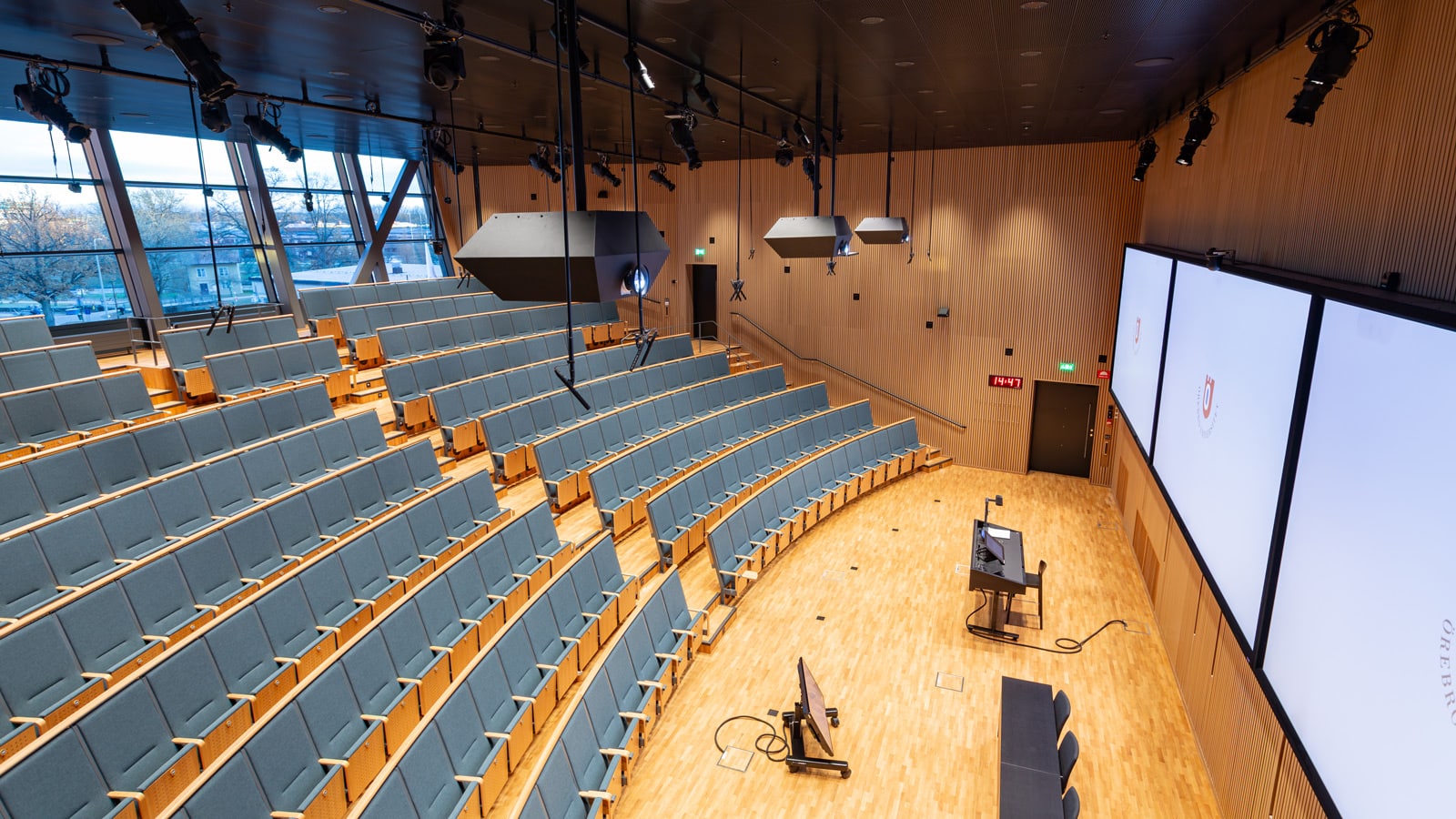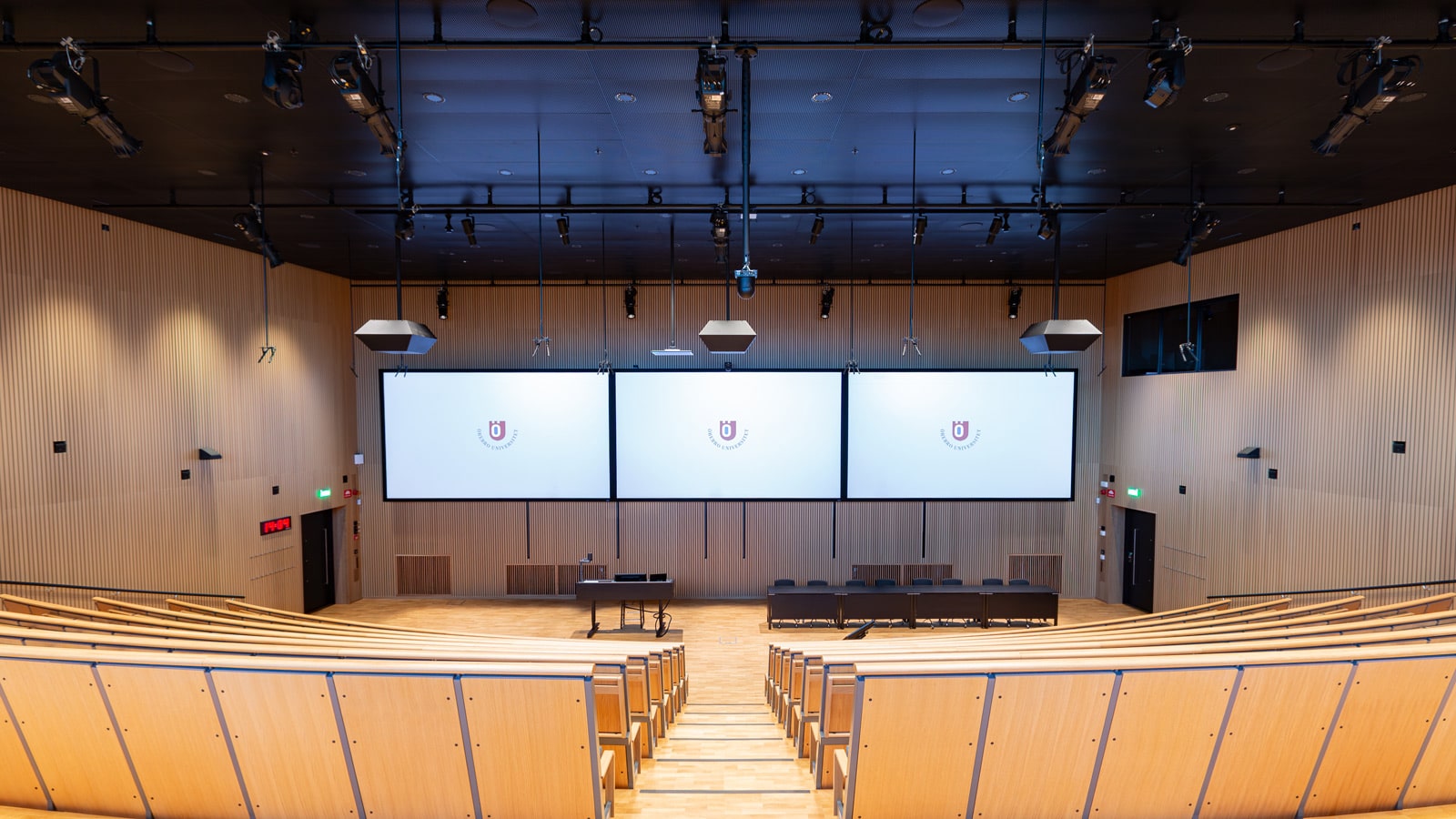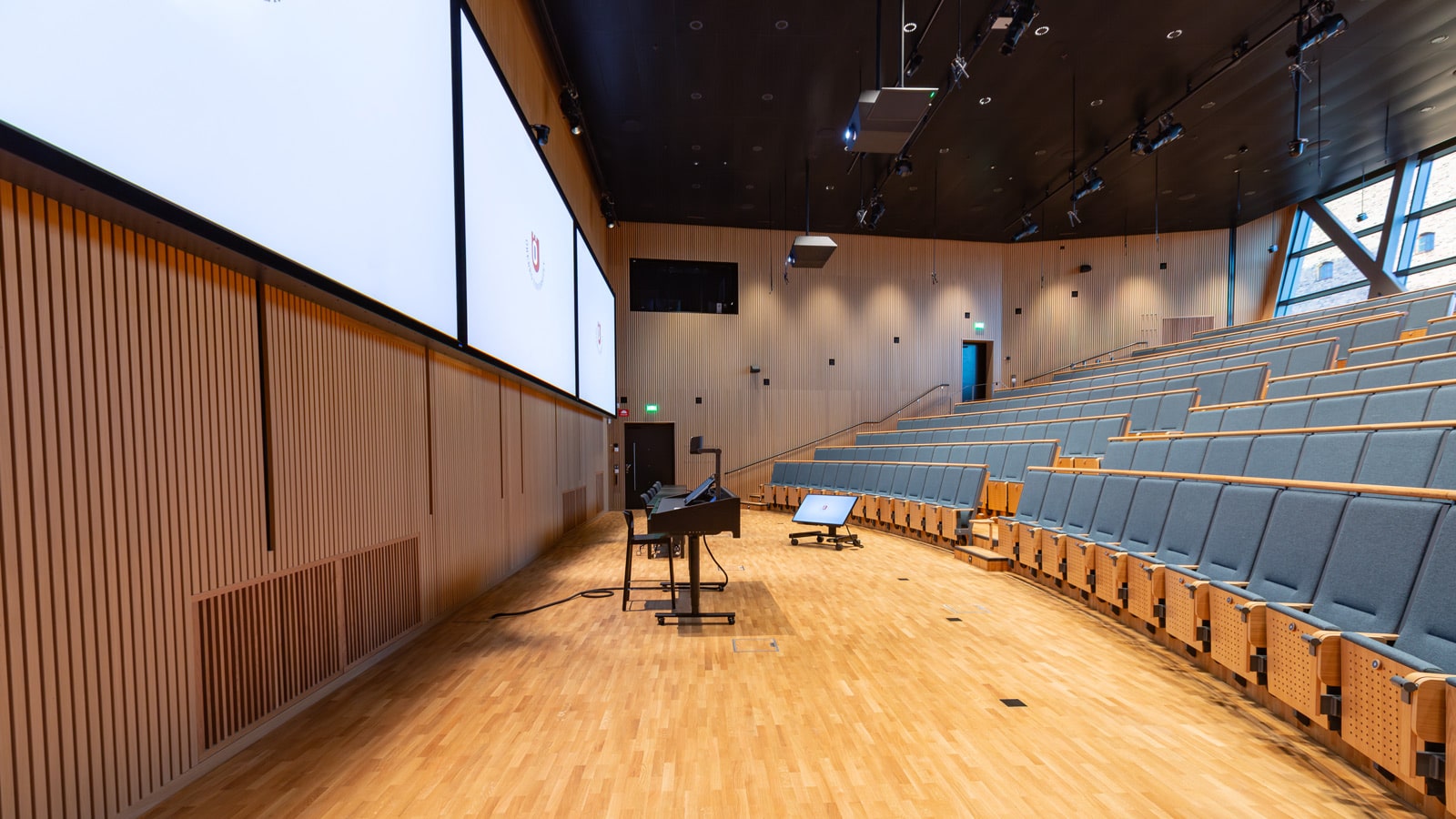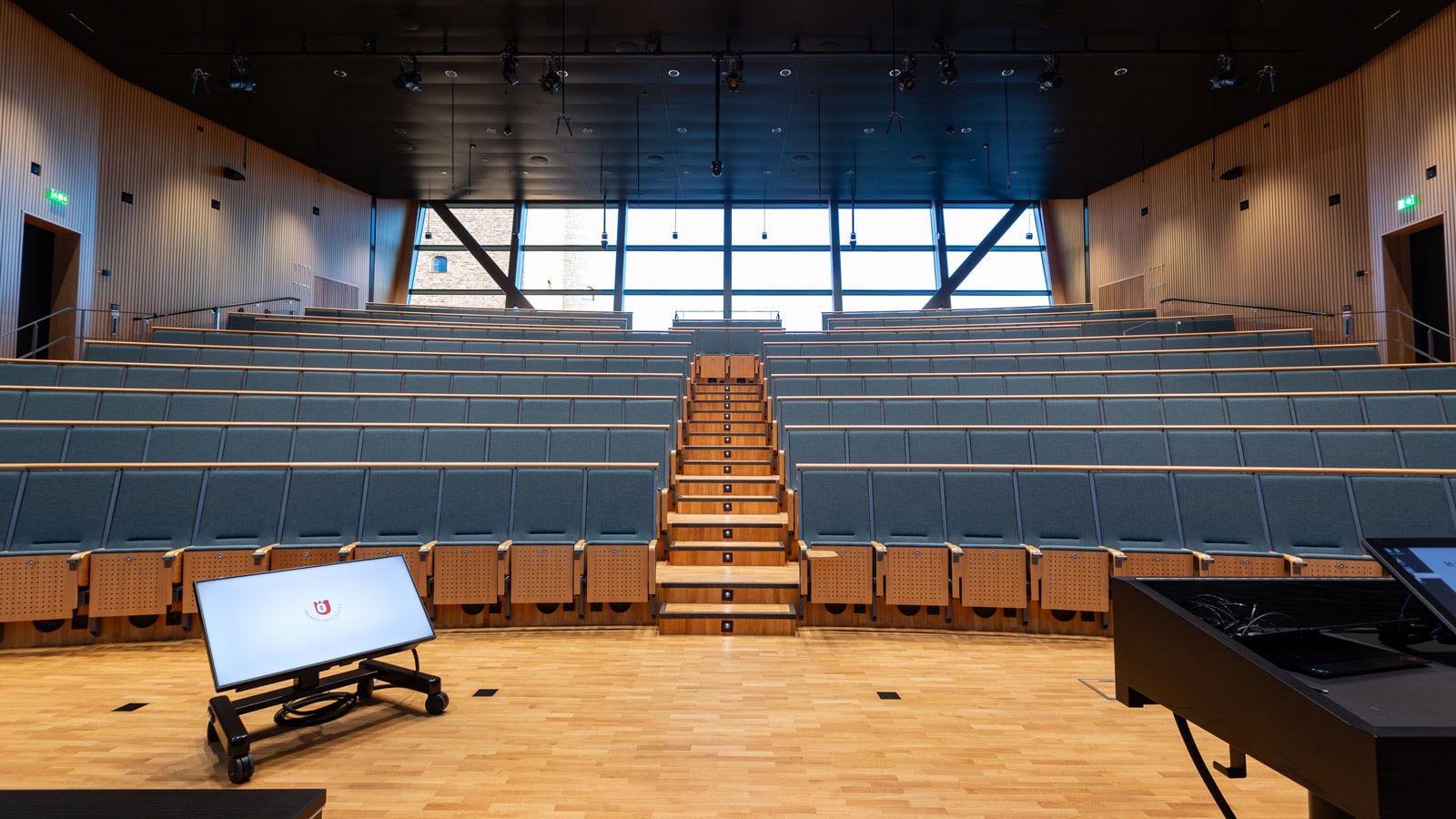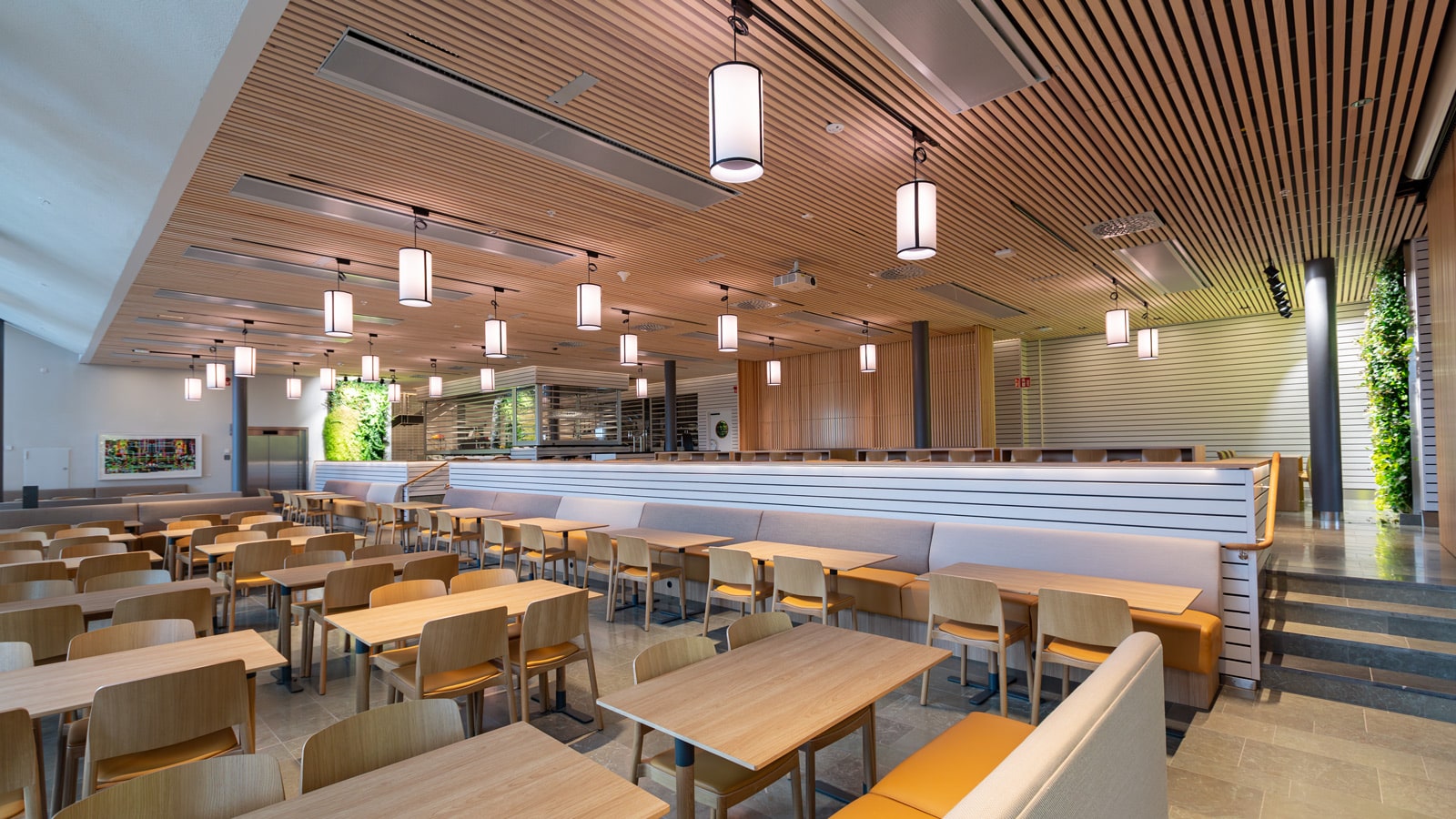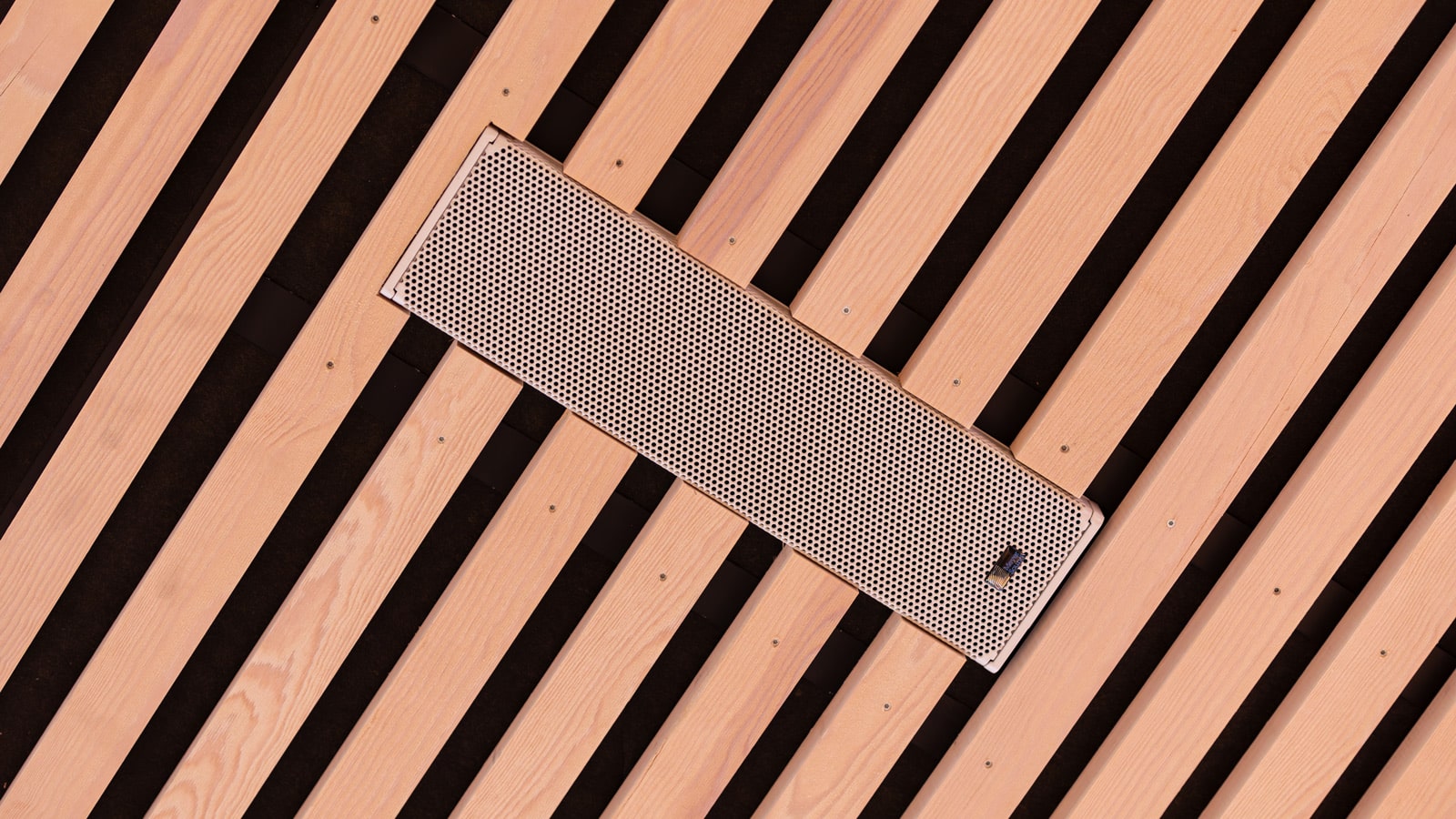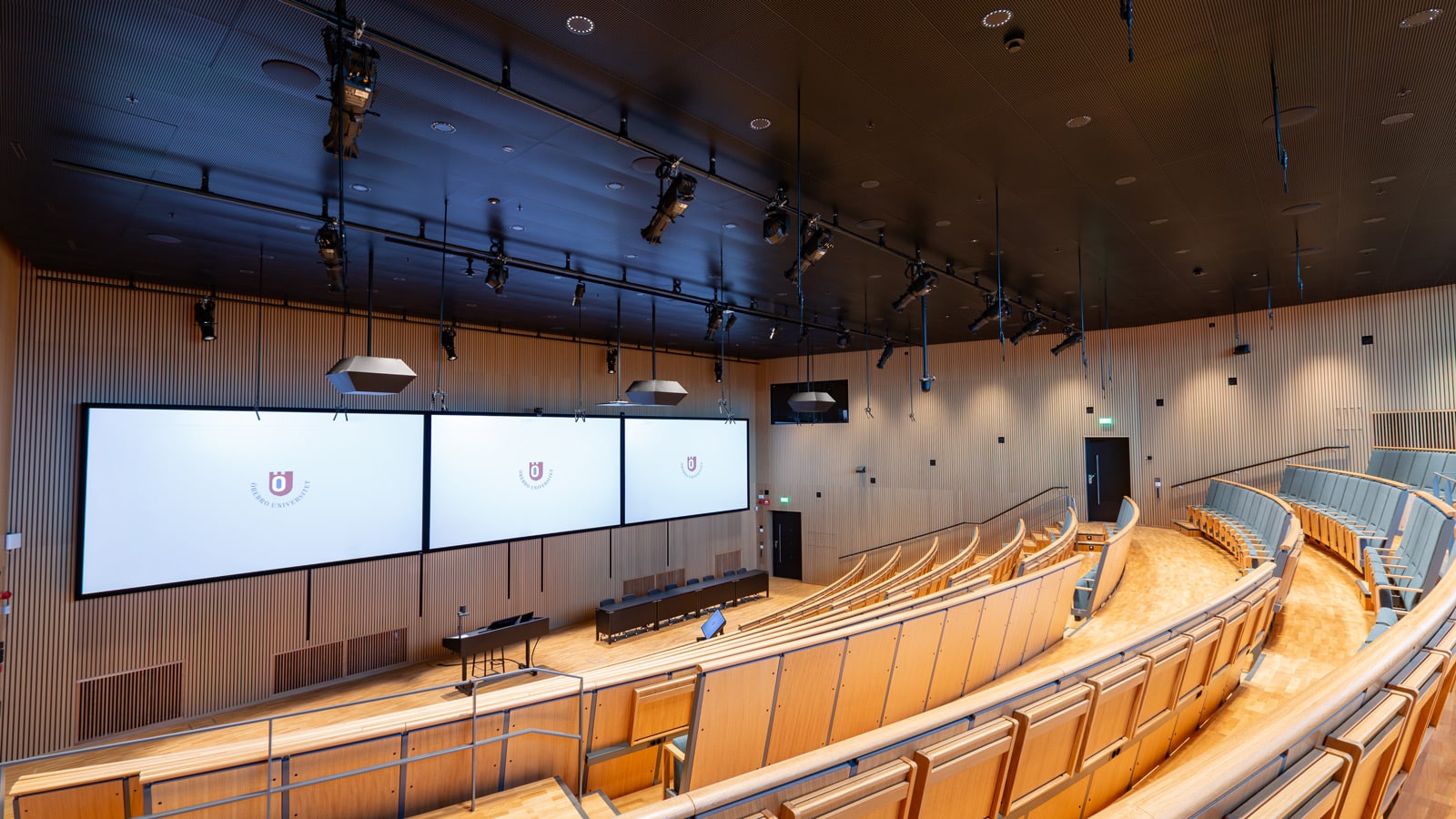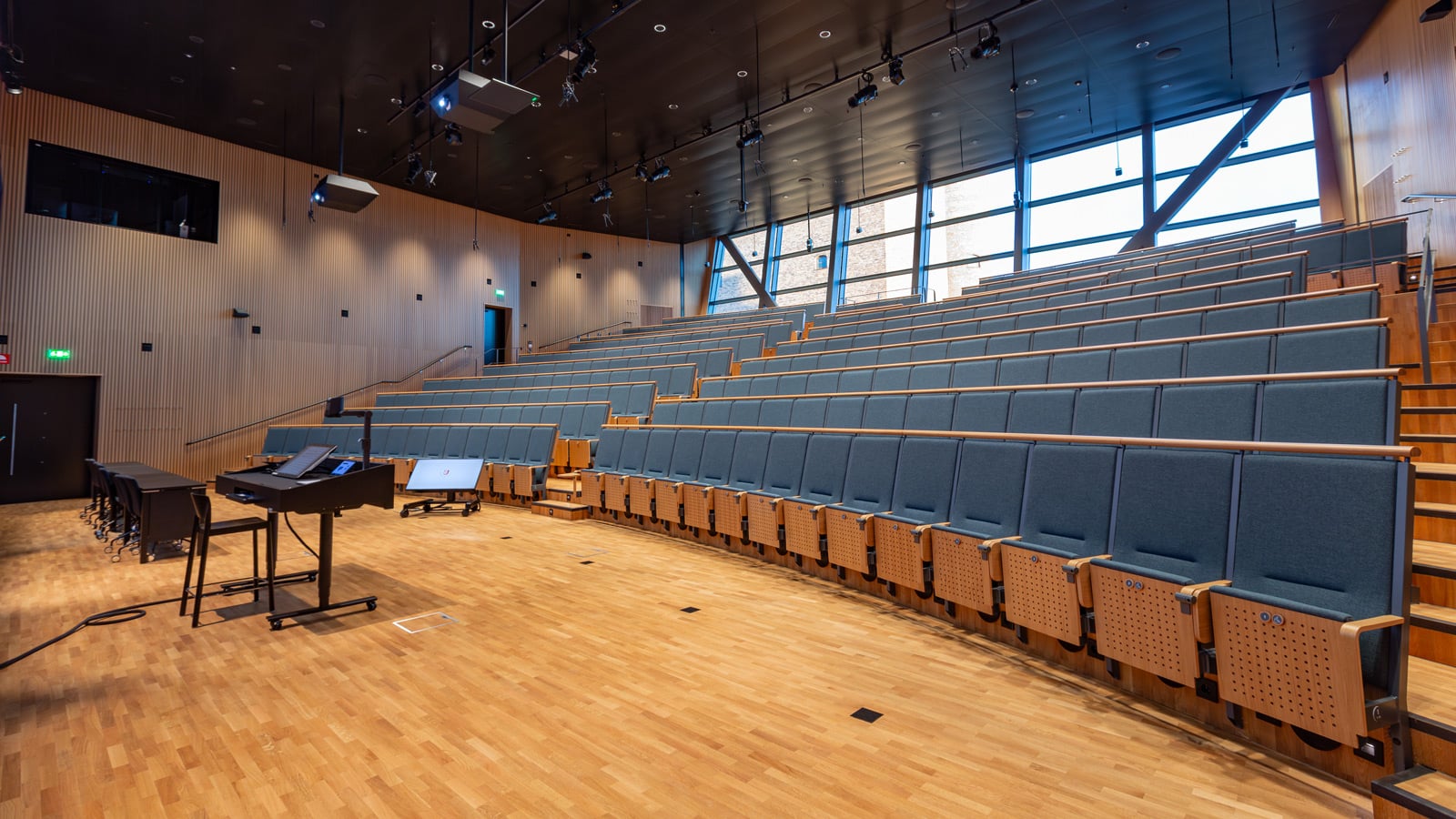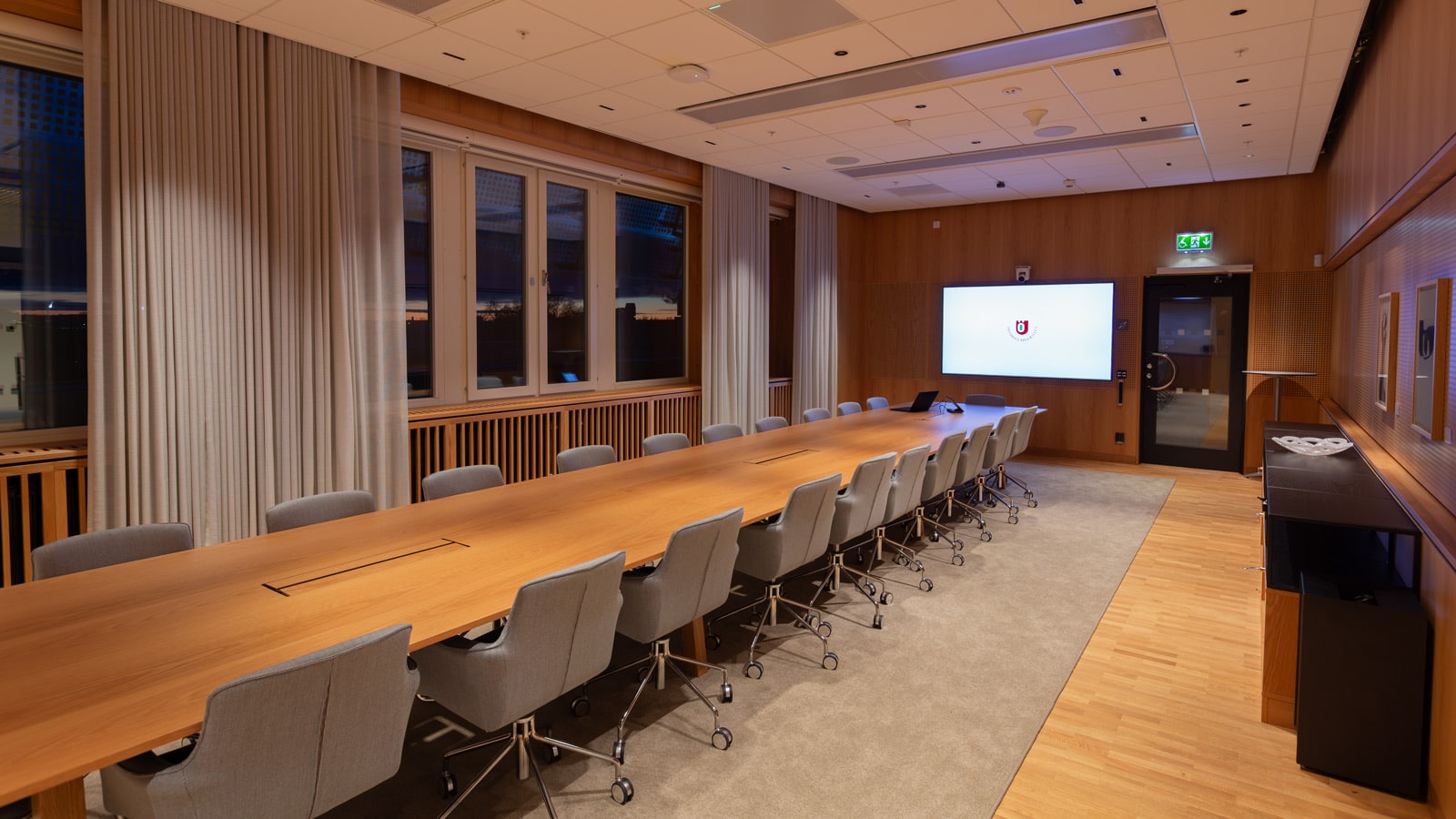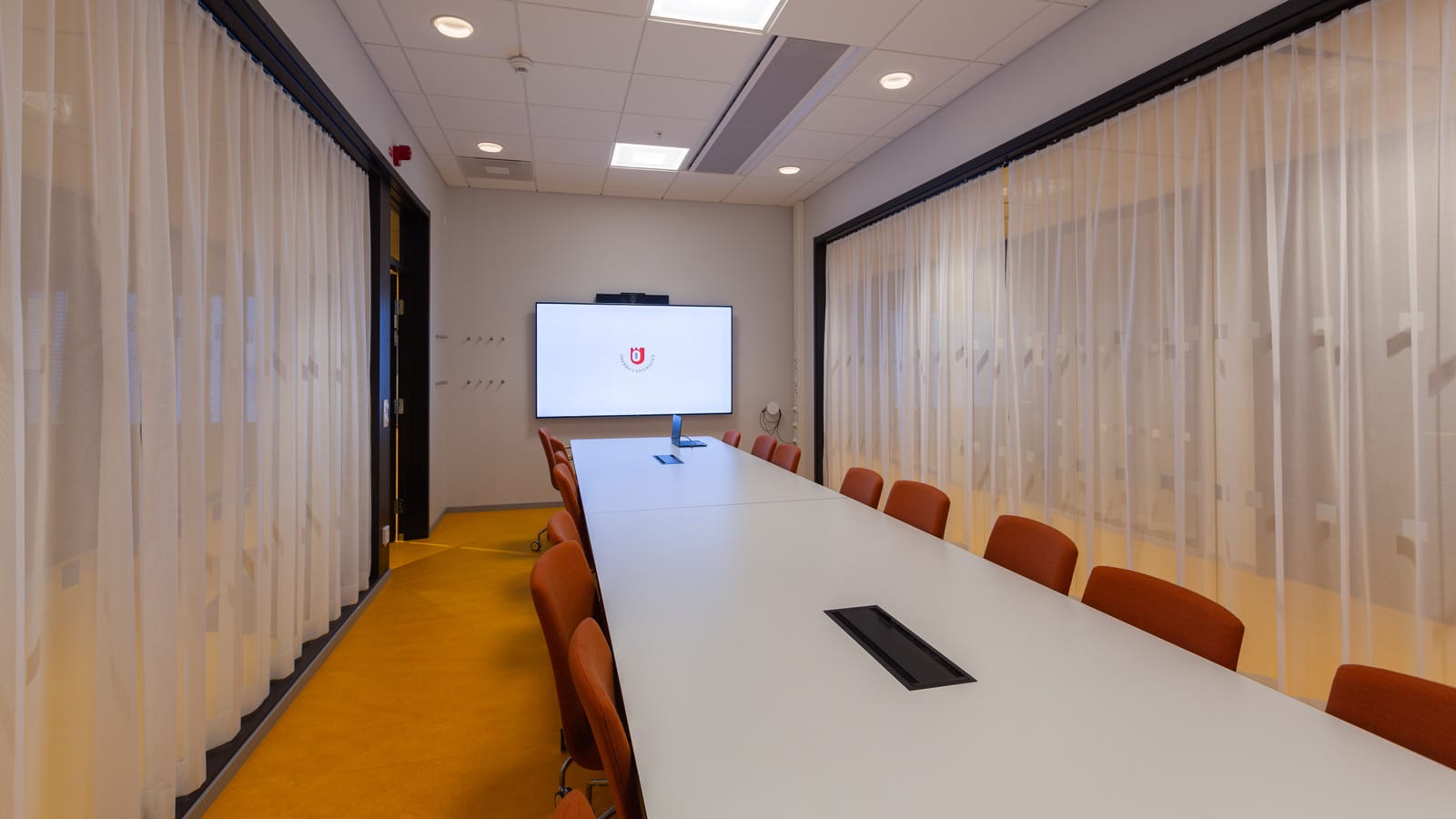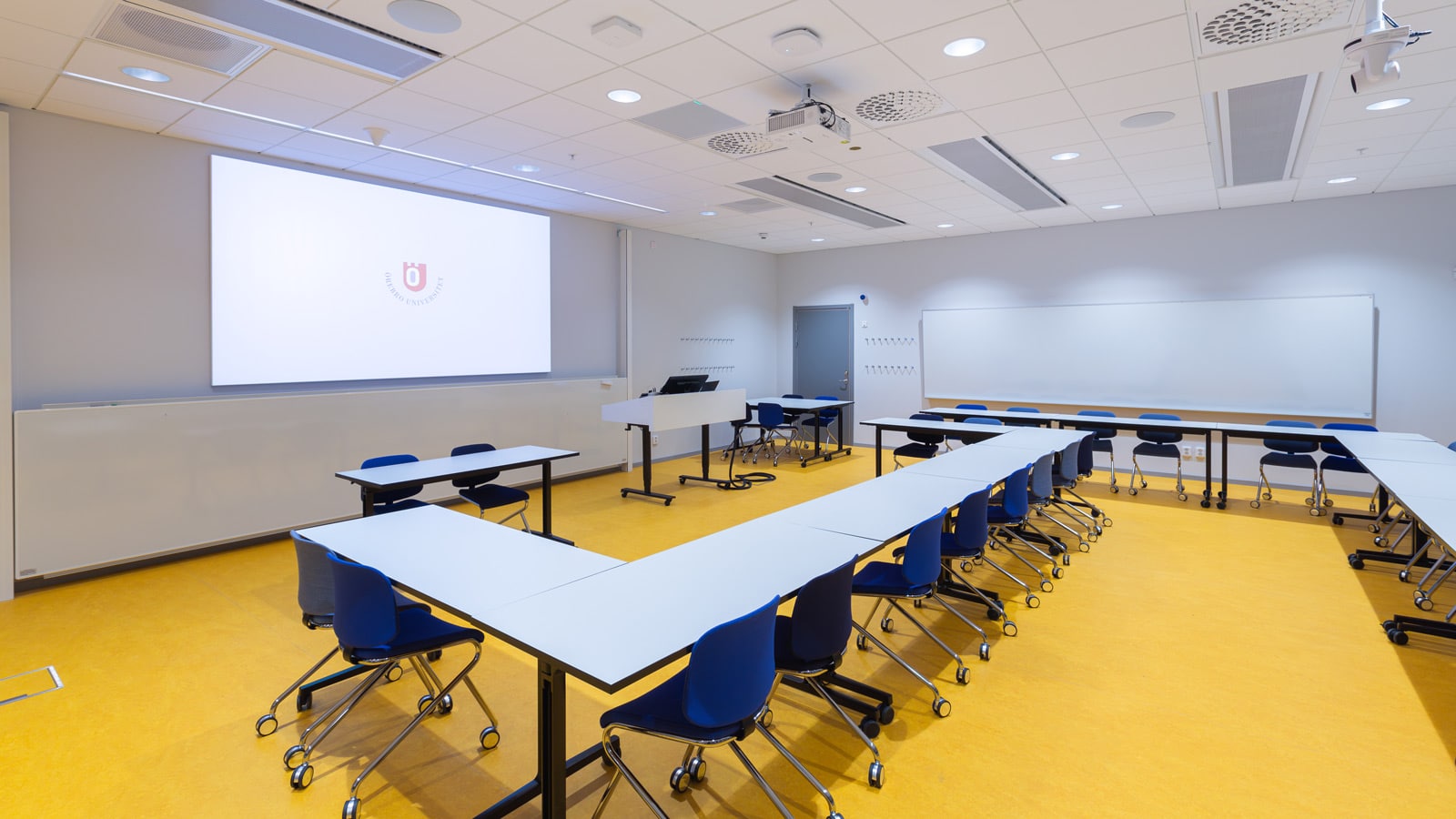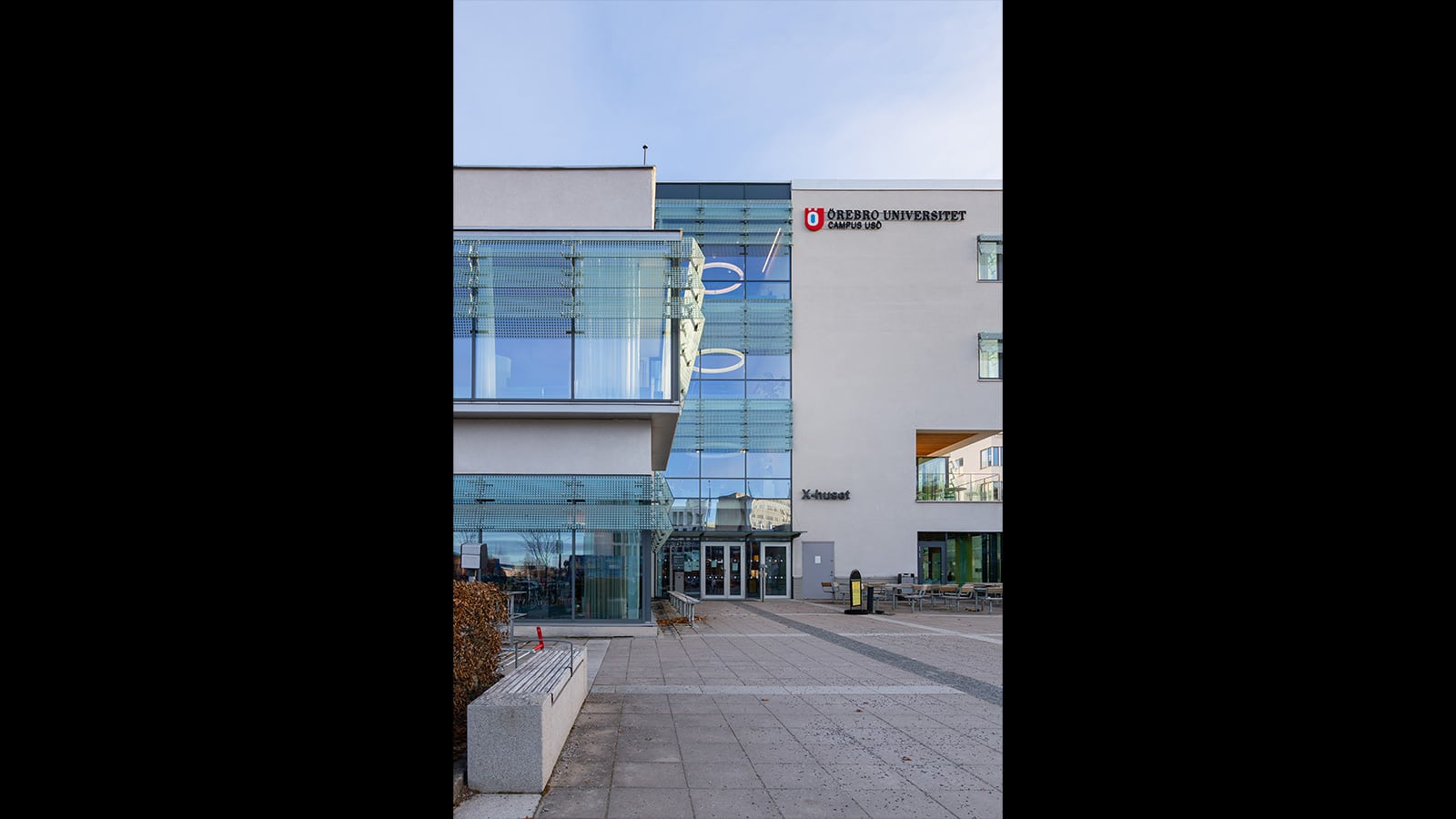We're seeing a lot of people embracing [Constellation] and wanting to learn more about how they can incorporate this technology into work and teaching environments.”
Anders JørgensenProject Lead, Stouenborg ApS
Örebro University in Sweden has unveiled the latest addition to its USÖ (Örebro University Hospital) Campus, a modernized, technology-connected center for medical training and clinical research. The centerpiece of the renovated and expanded complex, designed by architect KLARA arkitekter, is a state-of-the-art auditorium equipped with a Constellation acoustic system by Meyer Sound.
AV systems for the auditorium and related spaces were designed, engineered, and installed by Danish consultant and integrator Stouenborg ApS, which also provided acoustician services.
The project began in 2019, when Örebro University, embarking on the final stage of its USÖ Campus expansion, approached Stouenborg with a strategy inspired by the firm’s work on Copenhagen’s landmark Maersk Tower, home to the Faculty of Health and Medical Sciences at the University of Copenhagen. “They literally asked us to do that again, but to improve all the things we thought could be better with new technology,” says Anders Jørgensen, project lead at Stouenborg.
Central to Örebro University’s vision for its auditorium was the integration of the active acoustics showcased in the Maersk Tower, which houses the largest education-focused Constellation voice lift system in the world. “It’s always been a part of the conversation, saying, ‘how can we shorten the distance between a professor and the students in a lecture, and how can we change the possibilities in a room with active acoustics?’” says Jørgensen. “One of the things they were very keen on was the ability to have focused acoustics, where you’re able to focus the sound on a couple of students in a group session and then with a press of a button, go back to Q&A or voice lift presentation mode.”
Örebro’s 300-seat auditorium is a versatile space that hosts a range of events. Its Constellation system transforms the room’s acoustic profile at the push of a button, creating ideal sonic environments for everything from lectures to musical performances. Constellation voice lift technology supports natural-sounding presentations and Q&A sessions where no one needs to worry about microphones. The system features 36 microphones and 26 Ashby‑8C ceiling loudspeakers. Twenty-eight MM‑4XP miniature self-powered speakers were distributed throughout the auditorium, with UP‑4slim ultra-compact installation loudspeakers concealed behind a projection screen. At the heart of the system is the D-Mitri digital platform that hosts the advanced technology and sophisticated signal processing behind Constellation.
Active acoustics are a powerful tool for heightening engagement, says Jørgensen. “One of the things we’ve seen in both the Maersk Tower and on this project is that the students feel more involved in the lecture,” he explains. “From my perspective, there are three reasons for that. One is the active acoustics system, the second is the elevation of the seats, and the last thing is the balance of natural light and artificial light in the room. If you find the right combination between those three things, you get a more active learning space that engages people more.”
Optimizing the room’s physical properties for active acoustics called for creative problem-solving. “We’ve learned from various Constellation projects that the better we control the low end, the better the result of the acoustic system,” says Jørgensen. “The architects wanted a solid black ceiling with a metal surface; we convinced them to do it as a perforated metal surface.” Jørgensen installed a gypsum panel above the metal surface, serving as a membrane acoustic absorber.
Another challenge was preventing reflections from the large projection screen. “Because we have this active acoustics system, we wanted to bring down the reverberation time of the complete room to 0.3 seconds, which is even lower than a television recording studio,” says Jørgensen.
Meeting that goal meant the screen had to also serve as an absorber — an impossible task for off-the-shelf solutions. “We created a two-layer absorber, similar to what we have in the ceiling, which was a low-end absorber with a high-end absorber on top,” says Jørgensen, who installed a DA-LITE micro-perforated screen for maximum transparency and placed the custom absorber behind the screen along with microphones and UP-4slim ultra-compact installation loudspeakers.
Constellation microphones and speakers were installed using GPS coordinates, at a precision within millimeters. “Installing loudspeakers and microphones as close to the design locations as possible ensures the best performance of the system,” Jørgensen explains. “Being more precise meant that we could add more gain.”
In addition to the main auditorium, a multi-use restaurant/event space features Meyer Sound UP-4slim ultra-compact installation loudspeakers mounted in the ceiling and in weatherproof columns on the terrace, extending the immersive audio experience outdoors.
Ultimately, Jørgensen says, the more time people spend with Constellation, the more they understand its power to elevate engagement and collaboration. “We’re seeing a lot of people embracing it and wanting to learn more about how they can incorporate this technology into work and teaching environments.”
Reflecting on Constellation’s broader implications, Jørgensen is excited about the transformative potential of active acoustics in academia and beyond. “My personal wish is that active acoustics become more accessible — not just for higher education institutions, but also for offices and public spaces,” he says. “We see that a lot of people are using it, and we see a lot of people being very, very happy with it.”

